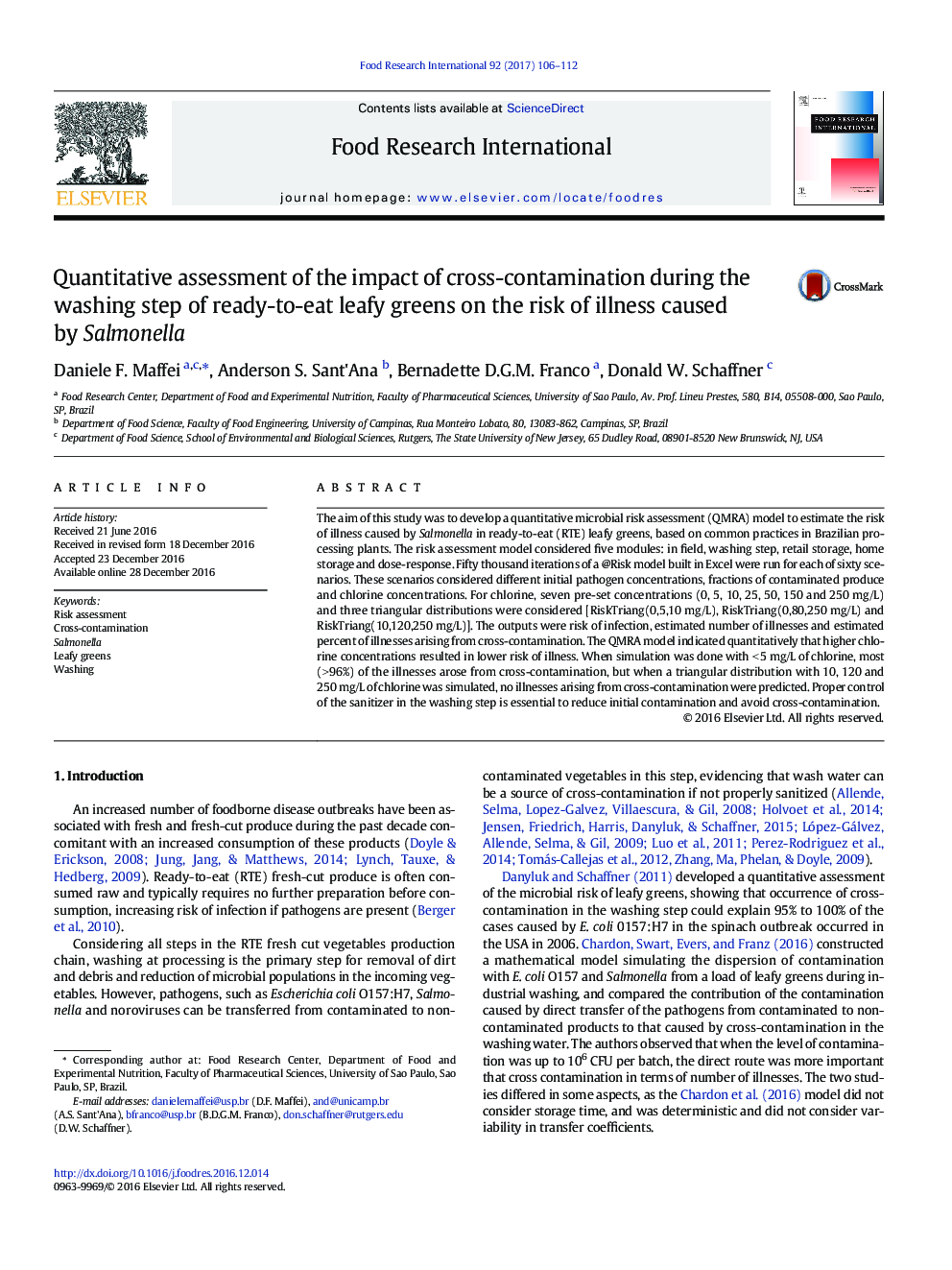| کد مقاله | کد نشریه | سال انتشار | مقاله انگلیسی | نسخه تمام متن |
|---|---|---|---|---|
| 5768312 | 1628458 | 2017 | 7 صفحه PDF | دانلود رایگان |
- Salmonella transfer by cross-contamination during washing of vegetables was modeled.
- The QMRA covered the complete production chain (from field to consumption).
- Most predicted illness arises from cross-contamination when chlorine is <Â 5Â mg/L.
- More illnesses from cross-contamination arise when initial prevalence is lower.
- Chlorine concentration should be kept above 10Â mg/L to minimize the risk of illness.
The aim of this study was to develop a quantitative microbial risk assessment (QMRA) model to estimate the risk of illness caused by Salmonella in ready-to-eat (RTE) leafy greens, based on common practices in Brazilian processing plants. The risk assessment model considered five modules: in field, washing step, retail storage, home storage and dose-response. Fifty thousand iterations of a @Risk model built in Excel were run for each of sixty scenarios. These scenarios considered different initial pathogen concentrations, fractions of contaminated produce and chlorine concentrations. For chlorine, seven pre-set concentrations (0, 5, 10, 25, 50, 150 and 250Â mg/L) and three triangular distributions were considered [RiskTriang(0,5,10Â mg/L), RiskTriang(0,80,250Â mg/L) and RiskTriang(10,120,250Â mg/L)]. The outputs were risk of infection, estimated number of illnesses and estimated percent of illnesses arising from cross-contamination. The QMRA model indicated quantitatively that higher chlorine concentrations resulted in lower risk of illness. When simulation was done with <Â 5Â mg/L of chlorine, most (>Â 96%) of the illnesses arose from cross-contamination, but when a triangular distribution with 10, 120 and 250Â mg/L of chlorine was simulated, no illnesses arising from cross-contamination were predicted. Proper control of the sanitizer in the washing step is essential to reduce initial contamination and avoid cross-contamination.
203
Journal: Food Research International - Volume 92, February 2017, Pages 106-112
